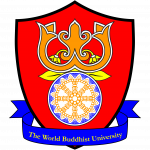The Majjhima Nikāya
A rigerous tour of the Majjhima Nikāya led by Bhikkhu Bodhi and supplemented by the excellent comparative scholarship of Bhikkhu Anālayo, this course will give you an excellent grounding in the most readable and important of the Early Buddhist Texts.
What is the Majjhima Nikāya?
The Majjhima Nikāya (or Middle Length Discourses) are a canonical collection of stories about early Buddhism preserved in the Pāli Canon of the Theravada tradition. These stories are neither as condensed as the poetry collections or Connected Discourses (which were stripped of much of their narrative context by the redactors) nor are they as elaborate as the (more mythological) Lengthy Discourses.
Traditionally, the Majjhima Nikāya (or MN for short) would have been a primary subject of study for new monks. The first ten discourses in particular would have been memorized (!) and analyzed in depth to form the foundation for the novice’s continued study and practice. As such, the MN strikes a nice balance between assuming intelligence and spiritual earnestness on the part of the reader (unlike, for example, the more family-friendly Jataka tales) without assuming too much in the way of prior doctrinal knowledge (unlike, for example, the more pithy Connected Discourses).
As Western-educated rationalists, The Middle Length Discourses are also an excellent place for us to lay our foundation, as their “middle length” provides us with enough narrative framing to imagine the Buddha in his cultural and historical context, without being so mythologically grandiose as to be unpalatable to modern ears.
Finally, in addition to striking such delicate balances, the Majjhima Nikāya also contains many individual suttas of such extraordinary depth and profound beauty as to be worth reading and rereading, pondering and savoring again and again, strictly on their own literary merits, let alone for the critical part they serve on the path to Awakening.
Prerequisites
This course requires prior familiarity with Buddhism and its purpose.
Time Requirement
This course is quite long if you hope to complete it. But don’t worry: each of the modules (not to mention each sutta) is a fairly self-contained unit and can be studied independently based on your interests. Feel free to pick and choose as you like!
For those looking to take the entire course, I recommend setting aside a few hours per week to study the Majjhima Nikaya — perhaps Wednesdays, Sundays, or Uposatha Days — whatever works for you. Make these days a special “holy” day, dedicated to your practice and study. Read one sutta, listen to the lecture(s) on it and reflect. Take your time. Meditate on it. Let this weekly ritual become part of your life. If you keep it up, in a few years you may even be sad to know that you’ve finished the course!

